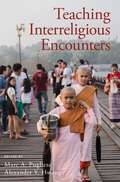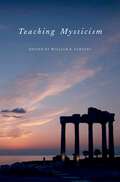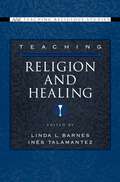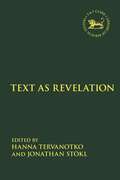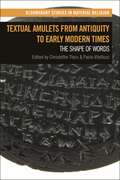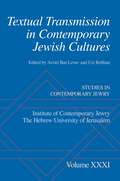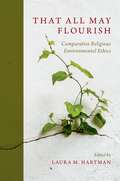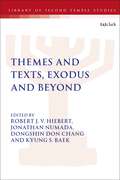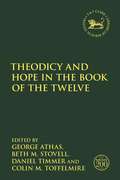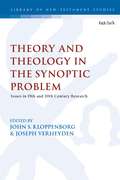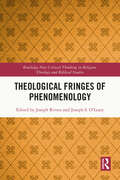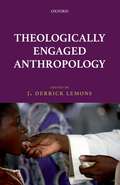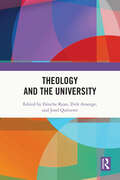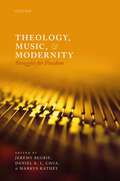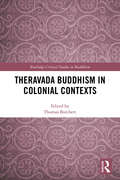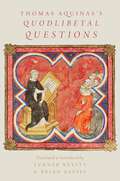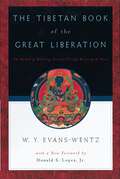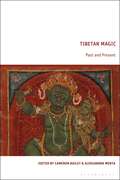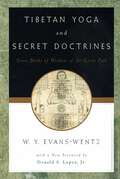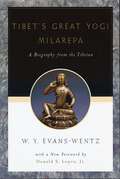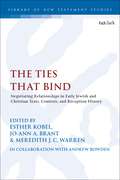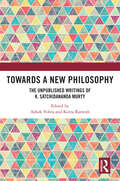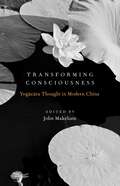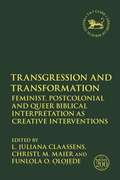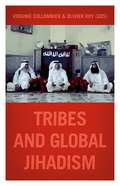- Table View
- List View
Teaching Interreligious Encounters (AAR Teaching Religious Studies Series)
In Teaching Interreligious Encounters, Marc A. Pugliese and Alexander Y. Hwang have gathered together a multidisciplinary and international group of scholar-teachers to explore the pedagogical issues that occur at the intersection of different religious traditions. This volume is a theoretical and practical guide for new teachers as well as seasoned scholars. It breaks the pedagogy of interreligious encounters down into five distinct components. In the first part, essays explore the theory of teaching these encounters; in the second, essays discuss course design. The parts that follow engage practical ideas for teaching textual analysis, practice, and real-world application. Despite their disciplinary, contextual, and methodological diversity, these essays share a common vision for the learning goals and outcomes of teaching interreligious encounters. This is a much-needed resource for any teacher participating in these conversations in our age of globalization and migration, with its attendant hopes and fears.
Teaching Mysticism (AAR Teaching Religious Studies)
The term ''mysticism'' has never been consistently defined or employed, either in religious traditions or in academic discourse. The essays in this volume offer ways of defining what mysticism is, as well as methods for grappling with its complexity in a classroom. This volume addresses the diverse literature surrounding mysticism in four interrelated parts. The first part includes essays on the tradition and context of mysticism, devoted to drawing out and examining the mystical element in many religious traditions. The second part engages traditions and religio-cultural strands in which ''mysticism'' is linked to other terms, such as shamanism, esotericism, and Gnosticism. The volume's third part focuses on methodological strategies for defining ''mysticism,'' with respect to varying social spaces. The final essays show how contemporary social issues and movements have impacted the meaning, study, and pedagogy of mysticism. Teaching Mysticism presents pedagogical reflections on how best to communicate mysticism from a variety of institutional spaces. It surveys the broad range of meanings of mysticism, its utilization in the traditions, the theories and methods that have been used to understand it, and provides critical insight into the resulting controversies.
Teaching Religion and Healing (AAR Teaching Religious Studies)
The study of medicine and healing traditions is well developed in the discipline of anthropology. Most religious studies scholars, however, continue to assume that "medicine" and "biomedicine" are one and the same and that when religion and medicine are mentioned together, the reference is necessarily either to faith healing or bioethics. Scholars of religion also have tended to assume that religious healing refers to the practices of only a few groups, such as Christian Scientists and pentecostals. Most are now aware of the work of physicians who attempt to demonstrate positive health outcomes in relation to religious practice, but few seem to realize the myriad ways in which healing pervades virtually all religious systems. This volume is designed to help instructors incorporate discussion of healing into their courses and to encourage the development of courses focused on religion and healing. It brings together essays by leading experts in a range of disciplines and addresses the role of healing in many different religious traditions and cultural communities. An invaluable resource for faculty in anthropology, religious studies, American studies, sociology, and ethnic studies, it also addresses the needs of educators training physicians, health care professionals, and chaplains, particularly in relation to what is referred to as "cultural competence" - the ability to work with multicultural and religiously diverse patient populations.
Text as Revelation (The Library of Hebrew Bible/Old Testament Studies)
Text as Revelation analyses the shift of revelatory experiences from oral to written that is described in ancient Jewish literature, including rabbinic texts. The individual essays seek to understand how, why, and for whom texts became the locus of revelation.While the majority of the contributors analyze ancient Jewish literature for depictions of oral and written revelation, such as the Hebrew Bible and the literature of the Second Temple era, a number of articles also investigate textualization of revelation in cognate cultures, analyzing Egyptian, Mesopotamian and Greek sources. With subjects ranging from Ancient Egyptian and Sibylline oracles to Hellenistic writings and the books of Isaiah, Deuteronomy and Jeremiah, the studies in this volume bring together established and new voices reflecting on the issues raised by the interplay between writing and (divinatory) revelation.
Textual Amulets from Antiquity to Early Modern Times: The Shape of Words (Bloomsbury Studies in Material Religion)
Comparing amulets over time and space, this volume focuses on the function of written words on these fascinating artefacts. Ranging from Roman Egypt to the Middle Ages and the Modern period, this book provides an overview on these artefacts in the Mediterranean world and beyond, including Europe, Iran, and Turkey. A deep analysis of the textuality of amulets provides comparative information on themes and structures of the religious traditions examined. A strong emphasis is placed on the material features of the amulets and their connections to ritual purposes. The textual content, as well as other characteristics, is examined systematically, in order to establish patterns of influence and diffusion. The question of production, which includes the relationships that linked professional magicians, artists and craftsmen to their clientele, is also discussed, as well as the sacred and cultural economies involved.
Textual Transmission in Contemporary Jewish Cultures (Studies in Contemporary Jewry)
Jewish culture places a great deal of emphasis on texts and their means of transmission. At various points in Jewish history, the primary mode of transmission has changed in response to political, geographical, technological, and cultural shifts. Contemporary textual transmission in Jewish culture has been influenced by secularization, the return to Hebrew and the emergence of modern Yiddish, and the new centers of Jewish life in the United States and in Israel, as well as by advancements in print technology and the invention of the Internet. Volume XXXI of Studies in Contemporary Jewry deals with various aspects of textual transmission in Jewish culture in the last two centuries. Essays in this volume examine old and new kinds of media and their meanings; new modes of transmission in fields such as Jewish music; and the struggle to continue transmitting texts under difficult political circumstances. Two essays analyze textual transmission in the works of giants of modern Jewish literature: S.Y. Agnon, in Hebrew, and Isaac Bashevis Singer, in Yiddish. Other essays discuss paratexts in the East, print cultures in the West, and the organization of knowledge in libraries and encyclopedias.
That All May Flourish: Comparative Religious Environmental Ethics
Can humans flourish without destroying the earth? In this book, experts on many of the world's major and minor religious traditions address the question of human and earth flourishing. Each chapter considers specific religious ideas and specific environmental harms. Chapters are paired and the authors work in dialogue with one another. Taken together, the chapters reveal that the question of flourishing is deceptively simple. Most would agree that humans should flourish without destroying the earth. But not all humans have equal opportunities to flourish. Additionally, on a basic physical level any human flourishing must, of necessity, cause some harm. These considerations of the price and distribution of flourishing raise unique questions about the status of humans and nature. This book represents a step toward reconciliation: that people and their ecosystems may live in peace, that people from different religious worldviews may engage in productive dialogue; in short, that all may flourish.
Themes and Texts, Exodus and Beyond (The Library of Second Temple Studies)
This volume of essays is focused on the significance of the book of Exodus for studies in the Septuagint, Second Temple Jewish literature, the New Testament, and Christian theology. A diverse group of scholars from various parts of the world, many of whom are well-known in their fields, employs a range of methodologies in the treatment of text-critical, linguistic, literary, historical, cultural, exegetical, intertextual, and theological topics. Parts of the relevant literary corpus that are dealt with in relation to the book of Exodus include Genesis, Leviticus, Deuteronomy, Psalms, Zechariah, 3 Maccabees, the Gospels of Matthew and Mark, the Epistles of 1 Thessalonians, Hebrews, and 1 Peter, as well as the Dead Sea Scrolls. This book will be a valuable resource for scholars and students in the areas of biblical and theological studies, as well as clergy.The distinguished contributors include Emanuel Tov, Albert Pietersma, Daniela Scialabba, Craig A. Evans, James M. Scott, Martin G. Abegg Jr., and Wolfgang Kraus.
Theodicy and Hope in the Book of the Twelve (The Library of Hebrew Bible/Old Testament Studies)
This volume explores the themes of theodicy and hope in both individual portions of the Twelve (books and sub-sections) and in the Book of the Twelve as a whole, as the contributors use a diversity of approaches to the text(s) with a particular interest in synchronic perspectives. While these essays regularly engage the mostly redactional scholarship surrounding the Book of Twelve, there is also an examination of various forms of literary analysis of final text forms, and engagement in descriptions of the thematic and theological perspectives of the individual books and of the collection as a whole. The synchronic work in these essays is thus in regular conversation with diachronic research, and as a general rule they take various conclusions of redactional research as a point of departure. The specific themes, theodicy and hope, are key ideas that have provided the opportunity for contributors to explore individual books or sub-sections within the Twelve, and the overarching development (in both historical and literary terms) and deployment of these themes in the collection.
Theological and Theoretical Issues in the Synoptic Problem (The Library of New Testament Studies)
This volume addresses the Synoptic Problem and how it emerged in a historical context closely connected with challenges to the historical reliability of the gospels; questions the ability of scholarship arriving at a compelling reconstruction of the historical Jesus; the limits of the canon; and an examination of the relationship between the historical reliability of gospel material and ecclesial dogma that was presumed to flow from the gospels. The contributors, all experts in the Synoptic Problem, probe various sites and issues in the 19th and 20th century to elaborate how the Synoptic Problem and scholarship on the synoptic gospels was seen to complement, undergird, or complicate theological views. By exploring topics ranging from the Q hypothesis to the Markan priority and the Two Document hypothesis, this volume supplies extensive theological context to the beginnings of synoptic scholarship from an entirely new perspective.
Theological Fringes of Phenomenology (Routledge New Critical Thinking in Religion, Theology and Biblical Studies)
This book focuses on the relationships between phenomenology and theology, which have been varied and complex but seem currently in an inconclusive and loosely defined state. Methodological rigor is not much in evidence, and the two disciplines continue to defy any authoritative synthesis. While both disciplines grapple with questions concerning the fundamental structures of human experience, their relationship is troubled by the elusive roles of Revelation and faith, which threaten the scientific autonomy of philosophy on one side and disable theologians for consistent philosophical discourse on the other. This volume revisits that conundrum from various perspectives, as it at once repristinates some of the most vibrant points of encounter and opens possibilities for new beginnings. It begins with the theological musings into which leading phenomenologists have been drawn from the start, with special reference to Husserl, Heidegger, and Michel Henry, as well as backward glances to Fichte, Schelling, and Blondel. A second section takes up specific theological themes and examines how phenomenological approaches can refine thinking on them. These include the Incarnation, the Resurrection, the Eucharist, Grace, and Prayer. A dialogue between phenomenology and classical theologians is staged in the third section: Augustine, Pseudo-Dionysius, Eckhart, and Karl Rahner. The closing section ranges more widely, discussing atheism, non-realist theology, and Hinduism from phenomenological angles, and showing how these topics too come within the ambit of theology.
Theologically Engaged Anthropology
After years of discussion within the field of anthropology concerning how to properly engage with theology, a growing number of anthropologists now want to engage with theology as a counterpart in ethnographic dialogue. Theologically Engaged Anthropology focuses on the theological history of anthropology, illuminating deeply held theological assumptions that humans make about the nature of reality, and illustrating how these theological assumptions manifest themselves in society. This volume brings together leading anthropologists and theologians to consider what theology can contribute to cultural anthropology and ethnography. It provides anthropologists and theologians with a rationale and framework for using theology in anthropological research.
Theology and the University
Theology and the University presents a compelling argument as to why theology still matters. It considers how theology has been marginalised in the academy and in public life, arguing that doing so has serious repercussions for the integrity of the academic study of religion.The chapters in this book demonstrate how theology, as the only discipline which represents religion from within, provides insight into aspects of religion which are hidden from the social sciences. Against a backdrop of heated debates on the role of the humanities in the university, the book highlights the specific contribution of theological education and research to the work of a university, providing essential information for academic and social/political decision-making. Whilst the book has an emphasis on the Catholic tradition, it explores the prospect of fruitful complementarity and interdisciplinarity both with secularised studies of religion, and other disciplines in the university, such as literature, philosophy, and the social sciences.This book provides orientation for decision-makers, particularly those concerned with the broader question of humanities in the university; students in their choice of study; those interested in the wellbeing of today’s universities; and ecclesial authorities seeking to form leaders capable of intelligent responses to the issues of contemporary society. It is a must read for all researchers of theology, as well as anyone interested in the role of the humanities more broadly.
Theology, Music, and Modernity: Struggles for Freedom
Theology, Music, and Modernity addresses the question: how can the study of music contribute to a theological reading of modernity? It has grown out of the conviction that music has often been ignored in narrations of modernity's theological struggles. Featuring contributions from an international team of distinguished theologians, musicologists, and music theorists, the volume shows how music—and discourse about music—has remarkable powers to bring to light the theological currents that have shaped modern culture. It focuses on the concept of freedom, concentrating on the years 1740-1850, a period when freedom—especially religious and political freedom-became a burning matter of concern in virtually every stratum of Western society. The collection is divided into four sections, each section focusing on a key phenomenon of this period—the rise of the concept of 'revolutionary' freedom; the move of music from church to concert hall; the cry for eschatological justice in the work of black hymn-writer and church leader Richard Allen; and the often fierce tensions between music and language. There is a particular concern to draw on a distinctively 'Scriptural imagination' (especially the theme of New Creation) in order to elicit the key issues at stake, and to suggest constructive ways forward for a contemporary Christian theological engagement with the legacies of modernity today.
Theravada Buddhism in Colonial Contexts (Routledge Critical Studies in Buddhism)
Over the course of the nineteenth century, most of the Theravada world of Southeast Asia came under the colonial domination of European powers. While this has long been seen as a central event in the development of modern forms of Theravada Buddhism, most discussions have focused on specific Buddhist communities or nations, and particularly their resistance to colonialism. The chapters in this book examine the many different colonial contexts and regimes that Theravada Buddhists experienced, not just those of European powers such as the British, French, but also the internal colonialism of China and Thailand. They show that while many Buddhists resisted colonialism, other Buddhists shared agendas with colonial powers, such as for the reform of the monastic community. They also show that in some places, such as Singapore and Malaysia, colonialism enabled the creation of Theravada Buddhist communities. The book demonstrates the importance of thinking about colonialism both locally and regionally. Providing a new understanding of the breadth of experiences of Theravada and colonialism across Asia., this book will be of interest to scholars in the field of Buddhist Studies, Asian History, Comparative World History, Southeast Asian Studies and Religious Studies.
Thomas Aquinas's Quodlibetal Questions
Thomas Aquinas was one of the most significant Christian thinkers of the middle ages and ranks among the greatest philosophers and theologians of all time. In the mid-thirteenth century, as a teacher at the University of Paris, Aquinas presided over public university-wide debates on questions that could be put forward by anyone about anything. The Quodlibetal Questions are Aquinas's edited records of these debates. Unlike his other disputed questions, which are limited to a few specific topics such as evil or divine power, Aquinas's Quodlibetal Questions contain his treatment of hundreds of questions on a wide range of topics--from ethics, metaphysics, philosophy of mind, and philosophy of religion to dogmatic theology, sacramental theology, moral theology, eschatology, and much more. And, unlike his other disputed questions, none of the questions treated in his Quodlibetal Questions were of Aquinas's own choosing--they were all posed for him to answer by those who attended the public debates. As such, this volume provides a window onto the concerns of students, teachers, and other interested parties in and around the university at that time. For the same reason it contains some of Aquinas's fullest, and in certain cases his only, treatments of philosophical and theological questions that have maintained their interest throughout the centuries.
The Tibetan Book of the Great Liberation: Or the Method of Realizing Nirv=ana through Knowing the Mind
The Tibetan Book of the Great Liberation, which was unknown to the Western world until its first publication in 1954, speaks to the quintessence of the Supreme Path, or Mah=ay=ana, and fully reveals the yogic method of attaining Enlightenment. Such attainment can happen, as shown here, by means of knowing the One Mind, the cosmic All-Consciousness, without recourse to the postures, breathings, and other techniques associated with the lower yogas. The original text for this volume belongs to the Bardo Thödol series of treatises concerning various ways of achieving transcendence, a series that figures into the Tantric school of the Mah=ay=ana. Authorship of this particular volume is attributed to the legendary Padma-Sambhava, who journeyed from India to Tibet in the 8th century, as the story goes, at the invitation of a Tibetan king. Padma-Sambhava's text per se is preceded by an account of the great guru's own life and secret doctrines. It is followed by the testamentary teachings of the Guru Phadampa Sangay, which are meant to augment the thought of the other gurus discussed herein. Still more useful supplementary material will be found in the book's introductory remarks, by its editor Evans-Wentz and by the eminent psychoanalyst C. G. Jung. The former presents a 100-page General Introduction that explains several key names and notions (such as Nirv=ana, for starters) with the lucidity, ease, and sagacity that are this scholar's hallmark; the latter offers a Psychological Commentary that weighs the differences between Eastern and Western modes of thought before equating the "collective unconscious" with the Enlightened Mind of the Buddhist. As with the other three volumes in the late Evans-Wentz's critically acclaimed Tibetan series, all four of which are being published by Oxford in new editions, this book also features a new Foreword by Donald S. Lopez.
Tibetan Magic: Past and Present
This book focuses on the theme of magic in Tibetan contexts, encompassing both pre-modern and modern text-cultures as well as contemporary practices. It offers a new understanding of the identity and role of magical specialists in both historical and contemporary contexts.Combining the theoretical approaches of anthropology, ethnography, religious and textual studies, the book aims to shed light on experiences, practices and practitioners that have been frequently marginalized by the normative mainstream monastic Buddhisttraditions and Western Buddhist scholarship, which focuses primarily on meditation andphilosophy.The book explores the intersection between magic/folk practices and Tantra, a complex, socio-religious phenomenon associated not only with the religious and political elites who sponsored it, but also with 'marginal' ethnic groups and social milieus, as well as with lay communities at large, who resorted to ritual agents to fulfil their worldly needs.
Tibetan Yoga and Secret Doctrines: Or Seven Books of Wisdom of the Great Path, According to the Late L=ama Kazi Dawa-Samdup's English Rendering
Books, audiotapes, and classes about yoga are today as familiar as they are widespread, but we in the West have only recently become engaged in the meditative doctrines of the East--only in the last 70 or 80 years, in fact. In the early part of the 20th century, it was the pioneering efforts of keen scholars like W. Y. Evans-Wentz, the late editor of this volume, that triggered our ongoing occidental fascination with such phenomena as yoga, Zen, and meditation. Tibetan Yoga and Secret Doctrines--a companion to the popular Tibetan Book of the Dead, which is also published by Oxford in an authoritative Evans-Wentz edition--is a collection of seven authentic Tibetan yoga texts that first appeared in English in 1935. In these pages, amid useful photographs and reproductions of yoga paintings and manuscripts, readers will encounter some of the principal meditations used by Hindu and Tibetan gurus and philosophers throughout the ages in the attainment of Right Knowledge and Enlightenment. Special commentaries precede each translated text, and a comprehensive introduction contrasts the tenets of Buddhism with European notions of religion, philosophy, and science. Evans-Wentz has also included a body of orally transmitted traditions and teachings that he received firsthand during his fifteen-plus years of study in the Orient, findings that will interest any student of anthropology, psychology, comparative religion, or applied Mah=ay=ana Yoga. These seven distinct but intimately related texts will grant any reader a full and complete view of the spiritual teachings that still inform the life and culture of the East. As with Evans-Wentz's other three Oxford titles on Tibetan religion, which are also appearing in new editions, this third edition of Tibetan Yoga and Secret Doctrines features a new foreword by Donald S. Lopez, author of the recent Prisoners of Shangri-La: Tibetan Buddhism and the West.
Tibet's Great Yog=i Milarepa: A Biography from the Tibetan being the Jetsün-Kabbum or Biographical History of Jetsün-Milarepa, According to the Late L=ama Kazi Dawa-Samdup's English Rendering
This life story of Milarepa--the important Tibetan religious leader who lived over 800 years ago--is part of a remarkable four-volume series on Tibetan Buddhism produced by the late W.Y. Evans-Wentz, all four of which are being published by Oxford in new editions. While there are many parochial differences among the several sects of Tibetan Buddhism, each holds the Great Yogi Milarepa in the highest reverence and esteem. For exemplified in Milarepa's life, as we discover in these pages, are all of the teachings of the great yogis of India--including those of Gautama the Buddha, the greatest yogi known to history. Amid his detailed introductory and explanatory notes for this text, Evans-Wentz also reveals compelling similarities between the life and thought of Milarepa and those of Jesus, Gandhi, and "saints...in ancient China, or India, or Babylonia, or Egypt, or Rome, or in our own epoch." In composing this translation from the original Tibetan, the late L=ama Kazi Dawa-Samdup, who was Evans-Wentz's guru for many years, aimed to show Western readers "one of our great teachers as he actually lived...much of which is couched in the words of his own mouth, and the remainder in the words of his disciple Rechung, who knew him in the flesh." For this third edition, Donald S. Lopez, author of Prisoners of Shangri-La: Tibetan Buddhism and the West, has written a critical foreword that updates and contextualizes this crucial part of Evans-Wentz's scholarship within the yoga tradition.
The Ties that Bind: Negotiating Relationships in Early Jewish and Christian Texts, Contexts, and Reception History (The Library of New Testament Studies)
Friendship and other intimate (but not always amicable) relationships have received some attention in the greater field of research on early Judaism and Christianity, though not as much as deserved. This volume celebrates and builds upon the life-long work of Adele Reinhartz, covering the various permutations of relationships that can be found in the Gospel of John, the wider corpus of early Jewish and Christian literature, and cinematic re-imaginings thereof.While the issue of whether one can 'befriend' the Fourth Gospel in light of the book's legacy of antisemitism is central to many of the essays in this volume, others address other more or less likely friendships: Pilate, Paul, Lazarus, Judas, or Mary Magdalene. Likewise, the bonds between ancient texts and contemporary retellings of their stories feature prominently, with contributors asking what kinds of relationships filmmakers encourage their audiences to have with their subjects. This volume explores some of the rich variety of relationships in the ancient world, and unpacks the intricate and dynamic processes and interactions by which human relationships and societies are generated, maintained, and dissolved.
Towards a New Philosophy: The Unpublished Writings of K. Satchidananda Murty
K. Satchidananda Murty (1924-2011) was a vociferous writer and an iconoclast. This volume is a collection of his unpublished writings It presents Murty's unpublished keynote addresses, papers presented in seminars, and lectures which show his reflections and arguments in contrast to contemporary philosophers with regard to recent developments in philosophy. The writings reveal Murty's rejection of established theories by well-known eastern and western philosophers, as well as his arguments in their support, and present a new interpretation of their contention in the contemporary idiom. Murty critically evaluates the contemporary arguments of Malcolm, James Ross, Alvin Plantinga, Charles Hawthorne, Jean-Paul Sartre, Anthony Flew, E.H. Madden, and P.H. Hare. An important contribution, the book assesses K. Satchidananda Murty's contribution to philosophy during sixty-one years of his engagement with active writing and teaching. It will be of great interest to scholars, teachers, and students of Indian philosophy, Hindu philosophy, Vedāntic philosophy, Advaita Vedānta, comparative philosophy, religious studies, and South Asian studies.
Transforming Consciousness: Yogacara Thought in Modern China
Yogacara is one of the most influential philosophical systems of Indian Buddhism. Competing traditions of Yogacara thought were first introduced into China during the sixth century. By the Yuan dynasty (1271-1368), however, key commentaries of this school had ceased being transmitted in China, and it was not until the end of the nineteenth century that a number of them were re-introduced from Japan where their transmission had been uninterrupted. Within a few short years Yogacara was being touted as a rival to the New Learning from the West, boasting not only organized, systematized thought and concepts, but also a superior means to establish verification. This book accomplishes three goals. The first is to explain why this Indian philosophical system proved to be so attractive to influential Chinese intellectuals at a particular moment in history. The second is to demonstrate how the revival of Yogacara thought informed Chinese responses to the challenges of modernity, in particular modern science and logic. The third goal is to highlight how Yogacara thought shaped a major current in modern Chinese philosophy: New Confucianism. Transforming Consciousness illustrates that an adequate understanding of New Confucian philosophy must include a proper grasp of Yogacara thought.
Transgression and Transformation: Feminist, Postcolonial and Queer Biblical Interpretation as Creative Interventions (The Library of Hebrew Bible/Old Testament Studies)
This volume on feminist, postcolonial and queer biblical interpretation gathers perspectives from a global body of researchers; in offering innovative interpretations of key texts from the Hebrew Bible, both established and emerging biblical scholars consider the question of how commonplace interpretative practices may be considered to be transgressive in nature. Utilizing innovative strategies, they read against the grain of the text and in support of the marginalized, the subordinated or subaltern others both in the text and in our world today. Important questions regarding power and privilege are constantly raised: whose voices are being heard, and whose interests are being served? Knowing all too well the harm that stereotypical constructions of the Other can do in terms of feeding racism, sexism, homophobia and imperialism in their respective interpretative communities, the essays in this volume interrogate constructions of ethnicity, gender, sexual orientation, and class, both in the text as well as in their respective contexts. By means of these thought-provoking interpretations, the contributors show their commitment not merely the sake of scholarship but to a scholarly ethos, which in some shape or form contributes to the cultivation of more just, equitable societies.
Tribes and Global Jihadism
Across the Muslim world, from Iraq and Yemen, to Egypt and the Sahel, new alliances have been forged between the latest wave of violent Islamist groups ---- -including Islamic State and Boko Haram ---- -and local tribes. But can one now speak of a direct link between tribalism and jihadism, and how analytically useful might it be? Tribes are traditionally thought to resist all encroachments upon their sovereignty, whether by the state or other local actors, from below; yet by joining global organizations such as Islamic State, are they not rejecting the idea of the state from above? This triangular relationship is key to understanding instances of mass 'radicalization', when entire communities forge alliances with jihadi groups, for reasons of self-interest, self-preservation or religious fervor. If Algeria's FIS or Turkey's AKP once represented the 'Islamization of nationalism', have we now entered a new era, the 'tribalization of globalization'?
